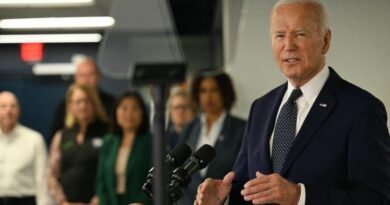Iran on the Edge of an Energy Crisis: A Historic Opportunity for Trump
Iranian Supreme Leader Ali Khamenei recently dismissed overseas audiences hoping to support Iran’s populace against the clerical regime, labeling them as “fools” drawn to the “scent of kebab” amidst his government’s numerous challenges.
However, the irony is on Khamenei’s side: With President Donald Trump likely returning to the White House next month, the U.S. may seize the opportunity to eradicate Tehran’s threats once and for all.
Iran is currently engulfed in a prolonged energy crisis that threatens to undermine the regime’s stability.
As a nation rich in oil and natural gas, the Islamic Republic has managed to navigate the Biden administration’s (albeit lenient) sanctions to maintain a presence in the global energy market.
Over the last three years, the regime has reportedly sold more than $140 billion in oil through illicit channels.
Nevertheless, years of economic mismanagement and corruption, coupled with conflicting priorities regarding the utilization of energy profits—whether to fund terror groups abroad or support the Iranian citizens—have led to severe gas shortages. This has hampered electricity generation and left millions of Iranians shivering in the winter months.
The situation has deteriorated so dramatically that even officials from the Islamic Revolutionary Guard Corps have labeled it as “disgraceful.”
Due to subsidized gas prices, demand remains high and continues unabated, and calls for reduced consumption from officials have been ineffective.
Additionally, Tehran has not addressed the energy infrastructure that has allegedly been targeted in this year’s Israeli airstrikes.
The outcome has been widespread blackouts, closed industries, and reduced working hours for both businesses and government offices, marking a dismal end to what many call an “annus horribilis.”
To mitigate the crisis, the regime could increase gas prices by cutting subsidies, but such a move would likely incite major anti-regime protests, reminiscent of those in November 2019.
Those earlier demonstrations, sparked by a preceding energy crisis, quickly escalated into widespread dissent against the regime’s policies and its very existence.
However, an uncontrolled energy crisis could trigger nationwide strikes, potentially echoing the events of the winter of 1978 that led to the revolution empowering the ayatollahs.
This domestic turmoil is further compounded by the plummeting value of the Iranian currency, the rial, which has seen its purchasing power drastically decrease. The unofficial exchange rate recently hit its lowest level against the US dollar ever recorded.
The governor of Iran’s Central Bank has attributed the rial’s collapse to geopolitical factors, highlighting the downfall of the Assad regime in Syria, setbacks with Israel, and Trump’s potential return as key reasons.
The currency plunged to an alarming 801,000 rials to 1 US dollar just after Christmas.
Tehran faces an even bleaker reality as one moves further from its borders.
Despite Iranian leaders vowing to eliminate Israel, the capabilities of Tehran’s terror proxies have been significantly diminished by Israeli military action.
The leadership and terror framework of Hamas in Gaza have been obliterated, while Hezbollah in Lebanon suffers substantial losses in arsenal, leadership, and mid-level commanders.
The decisive blow came with the collapse of Assad in Damascus, cutting off Tehran from a critical strategic asset, which previously facilitated its exportation of terror and threats against American and Israeli interests.

The Islamic Republic has also suffered a loss of its long-range air defenses due to an October counterstrike by Israel—leaving Tehran vulnerable in its future retaliations against Israeli and American interests.
Now staggering from continual defeats and attempting to mitigate unrest at home, Tehran has opted to postpone the enforcement of a controversial “hijab and chastity law” that would impose significant penalties, while also easing restrictions on applications like WhatsApp and Google Play.
These actions are not indicative of progress or reform but rather signs of retreat and frailty.
In light of the previous administration’s strategy of appeasement towards Iran, Trump has an opportunity to pivot in response.
By reinstating a “maximum pressure” policy involving stringent economic sanctions on oil and export revenues, alongside maintaining a viable military option, Trump can put Khamenei in a difficult position.
As tensions rise, expect Khamenei to increasingly rattle his nuclear saber, attempting to entice the West into negotiations.
However, if Trump resists the temptation and combines maximum pressure with robust support for the Iranian people, he can reverse the narrative surrounding Khamenei.
Since 2017, Iran’s oppressed citizens have seized every chance to protest against the regime as a whole.
With Trump’s backing, they could extinguish the flames ignited by the region’s instigators.
In that moment, Khamenei will discover who the true fool is.
Behnam Ben Taleblu is senior director of the Iran program at the Foundation for Defense of Democracies.



